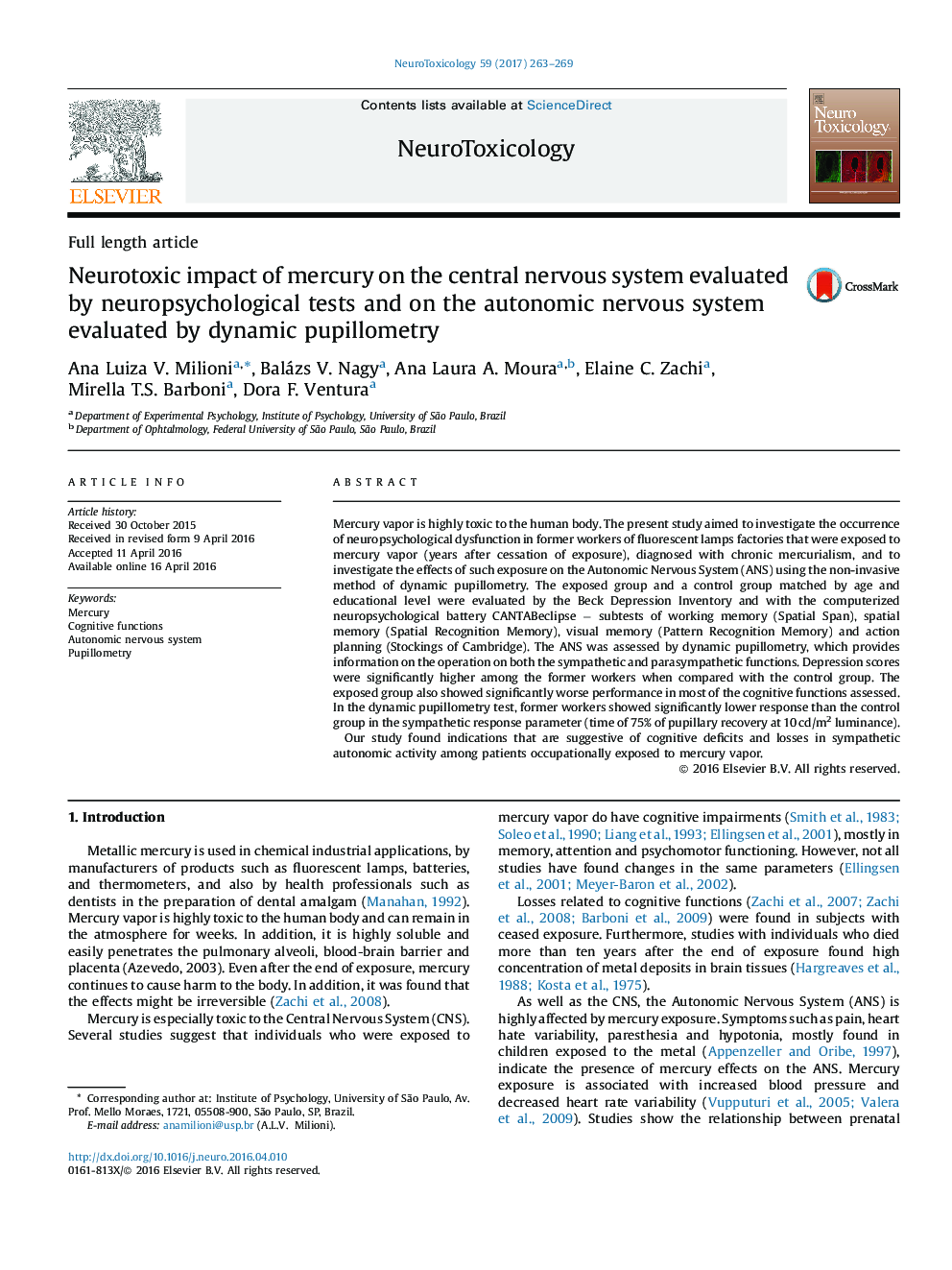| Article ID | Journal | Published Year | Pages | File Type |
|---|---|---|---|---|
| 5560964 | NeuroToxicology | 2017 | 7 Pages |
â¢Use of pupillometry to measure ANS response in mercury exposed patients is proposed.â¢Comparison between cognitive damage and ANS response.â¢Sympathetic response seemed to be impaired.
Mercury vapor is highly toxic to the human body. The present study aimed to investigate the occurrence of neuropsychological dysfunction in former workers of fluorescent lamps factories that were exposed to mercury vapor (years after cessation of exposure), diagnosed with chronic mercurialism, and to investigate the effects of such exposure on the Autonomic Nervous System (ANS) using the non-invasive method of dynamic pupillometry. The exposed group and a control group matched by age and educational level were evaluated by the Beck Depression Inventory and with the computerized neuropsychological battery CANTABeclipse â subtests of working memory (Spatial Span), spatial memory (Spatial Recognition Memory), visual memory (Pattern Recognition Memory) and action planning (Stockings of Cambridge). The ANS was assessed by dynamic pupillometry, which provides information on the operation on both the sympathetic and parasympathetic functions. Depression scores were significantly higher among the former workers when compared with the control group. The exposed group also showed significantly worse performance in most of the cognitive functions assessed. In the dynamic pupillometry test, former workers showed significantly lower response than the control group in the sympathetic response parameter (time of 75% of pupillary recovery at 10Â cd/m2 luminance).Our study found indications that are suggestive of cognitive deficits and losses in sympathetic autonomic activity among patients occupationally exposed to mercury vapor.
